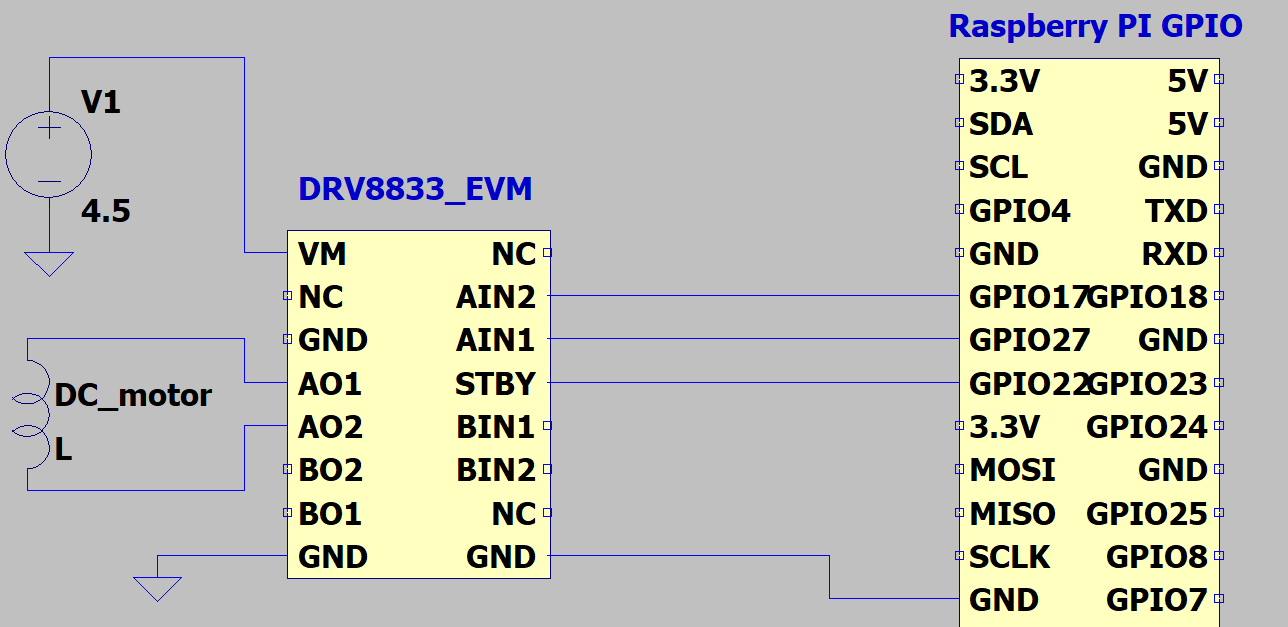This project walks through the issue where a DC motor would rotate when directly connected to a battery but not when connected via a motor driver IC.
Examined the voltage and waveforms using an oscilloscope and identifies the problem as a common mistake related to voltage drop during motor startup.
The motor driver IC used is the DRV8833, and the article details the troubleshooting process, which includes testing various configurations and adjusting the power supply voltage.
1. DRV8833The motor driver IC used is "DRV8833, " which can control both "stepper motors" and "DC motors."
The IC supports a wide operating voltage range from 2.7V to 10.8V.
For more details, please refer to the manufacturer's(TI) datasheet.
https://www.ti.com/product/DRV8833
When the motor alone is directly connected to a 3V battery, it has been confirmed that the motor rotates.
3. DC motor does not work with DRV8833 and 3V
When trying to operate the motor at 3V using Raspberry Pi and DRV8833, it did not work.
4. Check voltage drop during motor startupInvestigated the voltage of the driver IC and the motor using an oscilloscope.
During the actual motor startup, a large current flowed, causing a voltage drop. The oscilloscope confirmed that the voltage dropped to as low as 2.8V.
It appeared that the operation of the motor driver IC was stopping, likely due to reaching its lower voltage limit.
5. DC motor work with DRV8833 and 4.5V
Various measures can be considered, but when we changed from two dry cells (3.0V) to three (4.5V), we were able to confirm that the motor operated.







Comments
Please log in or sign up to comment.